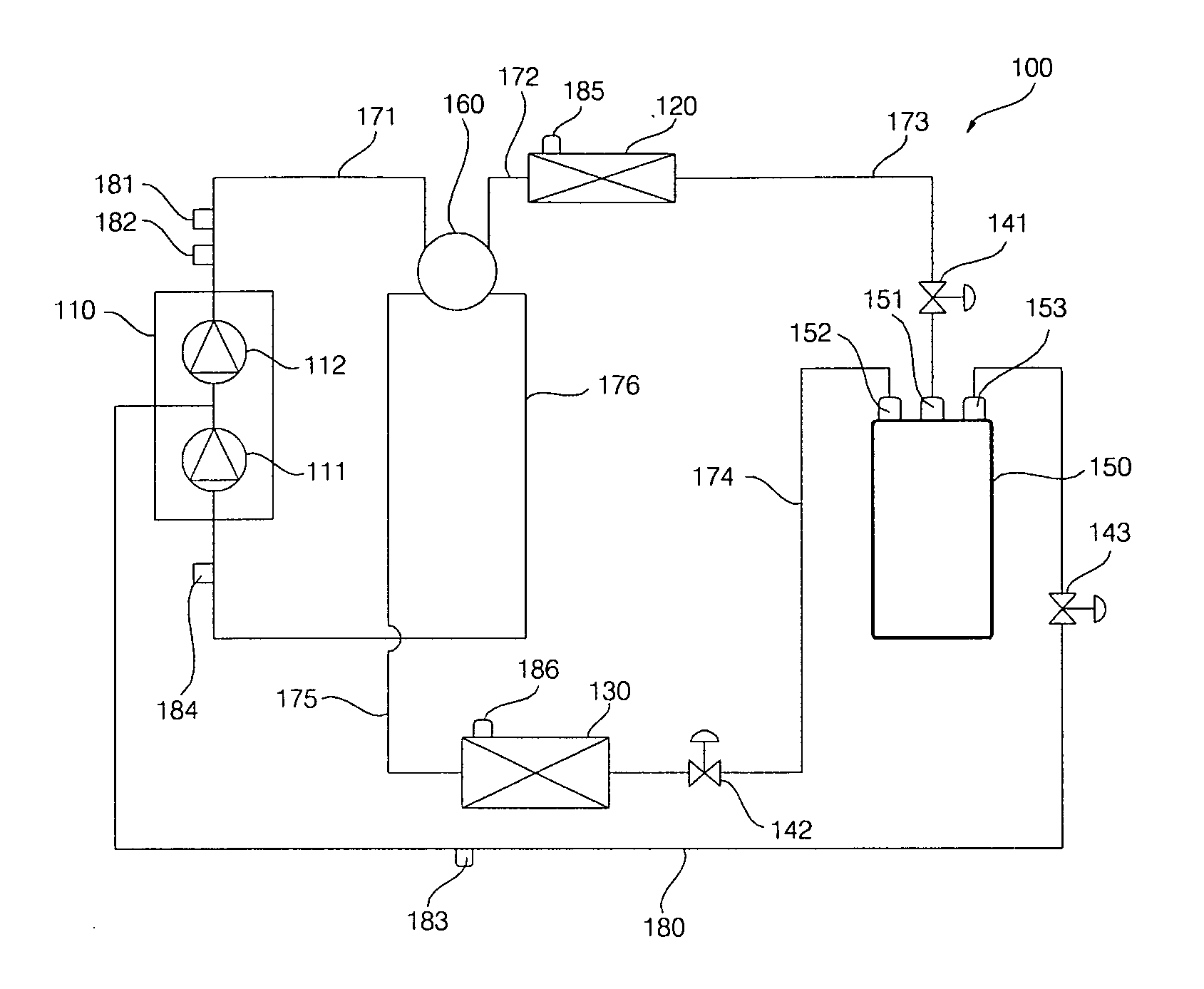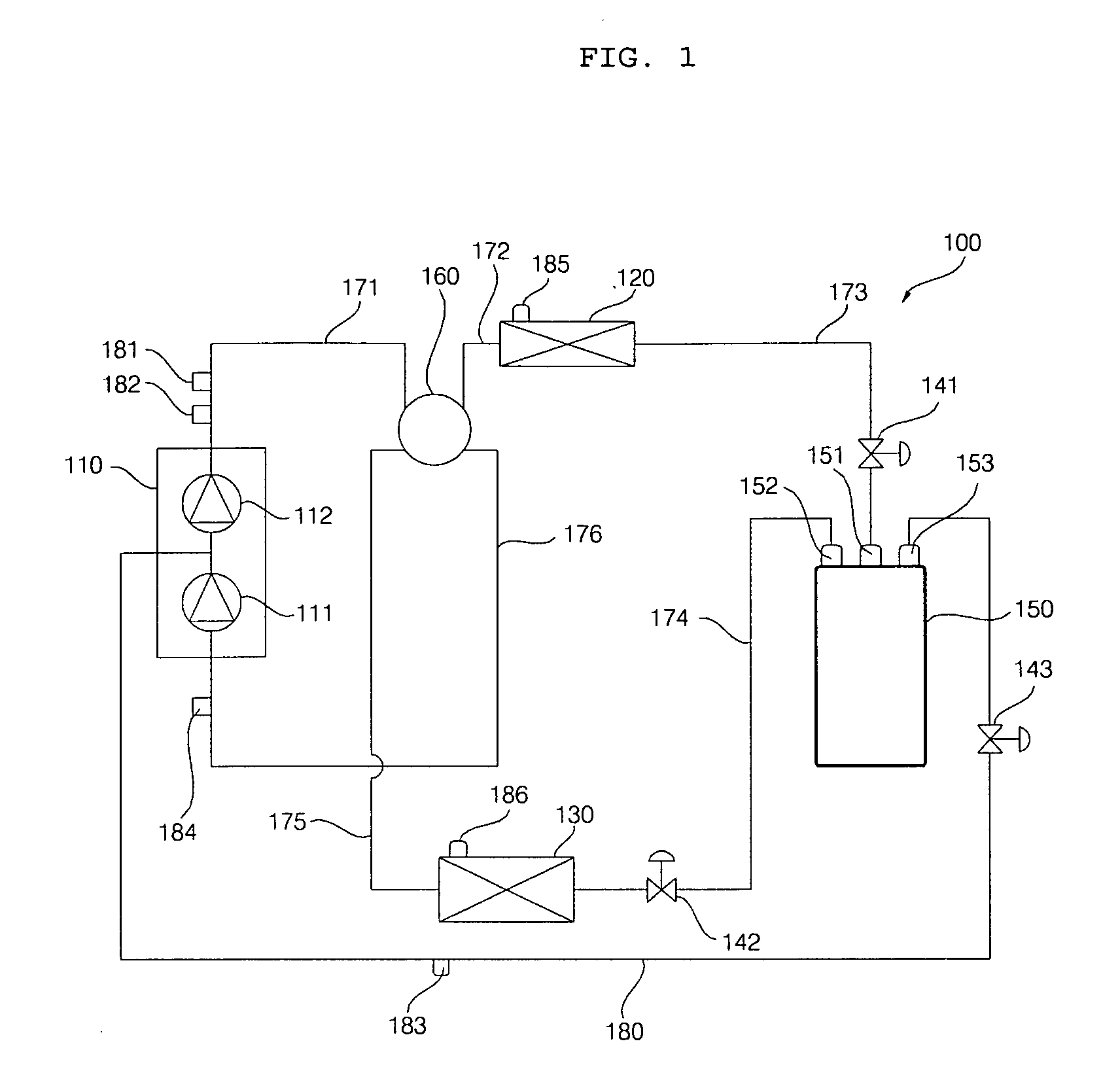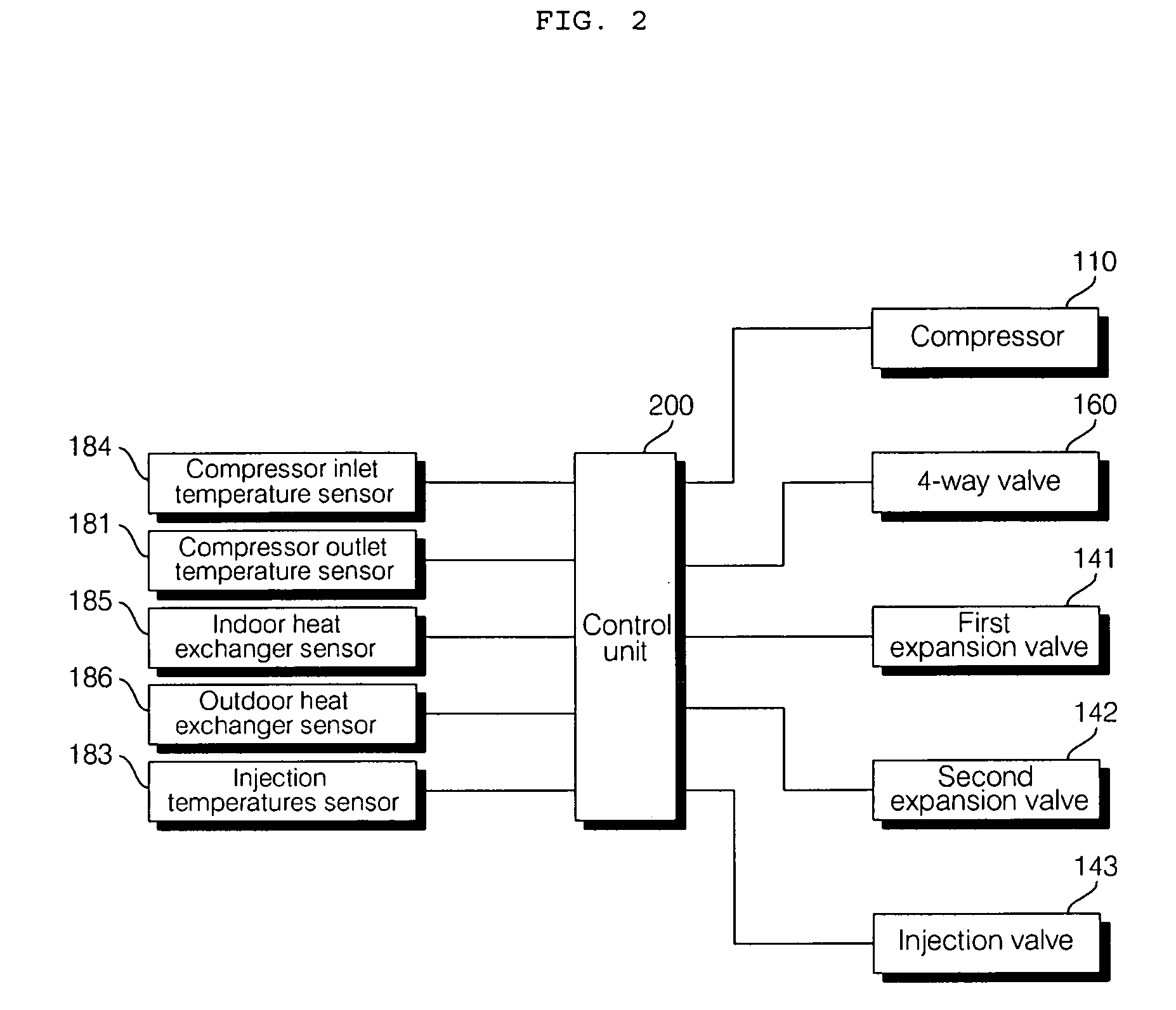Air conditioning system
a technology of air conditioning system and air conditioner, which is applied in the direction of refrigeration components, mechanical equipment, light and heating equipment, etc., can solve the problems of system instability and compressor damage, and achieve the effects of improving system stability, improving system stability, and improving system stability and performan
- Summary
- Abstract
- Description
- Claims
- Application Information
AI Technical Summary
Benefits of technology
Problems solved by technology
Method used
Image
Examples
first embodiment
[0041]FIG. 1 is a view showing the construction of an air conditioner 100 in accordance with the present invention. FIG. 2 is a block diagram showing a control flow of the air conditioner 100.
[0042]Referring to FIGS. 1 and 2, the air conditioner 100 includes a compressor 110, an indoor heat exchanger 120, an outdoor heat exchanger 130, a first expansion valve 141, a second expansion valve 142, a phase separator 150, and a 4-way valve 160. The indoor heat exchanger 120 functions as an evaporator in a cooling operation and functions as a condenser in a heating operation. The compressor 110 compresses an introduced refrigerant of low temperature and low pressure into a refrigerant of high temperature and high pressure. The compressor 110 includes a first compressing part 111 and a second compressing part 112. The first compressing part 111 compresses the refrigerant introduced from the evaporator, and the second compressing part 112 mixes and compresses the refrigerant coming from the ...
third embodiment
[0097]Alternatively, in a third embodiment, which is different from the previous embodiments, the target opening degree can be obtained by the following equation. Hereinafter, description will be made with respect to the differences with the foregoing embodiment.
[0098]Target opening degree=F (A1, A2, A3, A4, A5, . . . )
[0099]wherein A1˜A5 are the operating parameter values. F (A1, A2, A3, A4, A5, . . . ) can be expressed by the following equation:
F(A1, A2, A3, A4, A5, . . . )=c1*f1(A1)+c2*f2(A2)+c3*f3(A3)+
[0100]wherein C1, C2, . . . are proportional constants.
[0101]In the above equation, the actual characteristics of the operating parameter values can be expressed by using various constants (f1, f2, f3 . . . ), thus improving the accuracy of control.
[0102]Hereinafter, a control method for first and second expansion valves of an air conditioner in accordance with a fourth embodiment of the present invention will be described. The following description focuses on the difference with t...
fourth embodiment
[0105]FIG. 7 is a sequential view illustrating a control method for a first expansion valve when an air conditioner according to the present invention is in a heating operation mode.
[0106]Referring to FIG. 7, when the initialization of the first expansion valve 141 is finished (S1), the control unit 200 adjusts the opening amount of the first expansion valve 141 in order to adjust the intermediate pressure. At this time, the control unit 200 selects any one of the first control method S20 and the safety control method S30 according to the operation state of the air conditioner 100, and controls the first expansion valve 141. That is, the control unit 200 judges whether the air conditioner 100 is in a normal operation state, and switches the control method for the first expansion valve 141 according to the result. If the operating parameter value is within a preset normal operating range, the control unit 200 judges the air conditioner to be in the normal operation state, and control...
PUM
 Login to View More
Login to View More Abstract
Description
Claims
Application Information
 Login to View More
Login to View More - R&D
- Intellectual Property
- Life Sciences
- Materials
- Tech Scout
- Unparalleled Data Quality
- Higher Quality Content
- 60% Fewer Hallucinations
Browse by: Latest US Patents, China's latest patents, Technical Efficacy Thesaurus, Application Domain, Technology Topic, Popular Technical Reports.
© 2025 PatSnap. All rights reserved.Legal|Privacy policy|Modern Slavery Act Transparency Statement|Sitemap|About US| Contact US: help@patsnap.com



